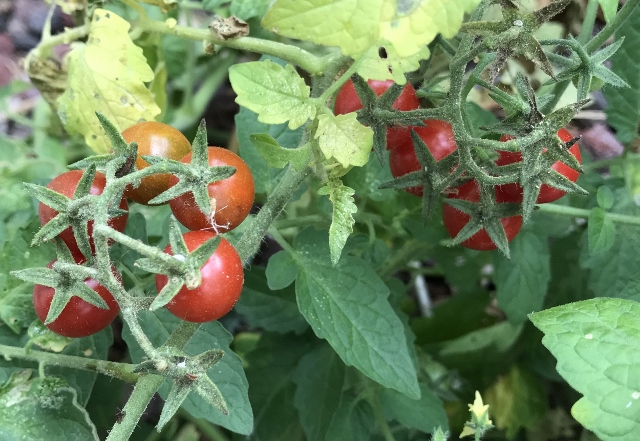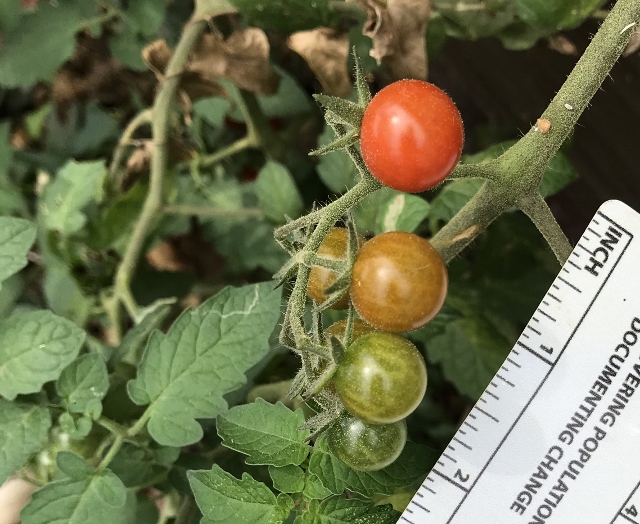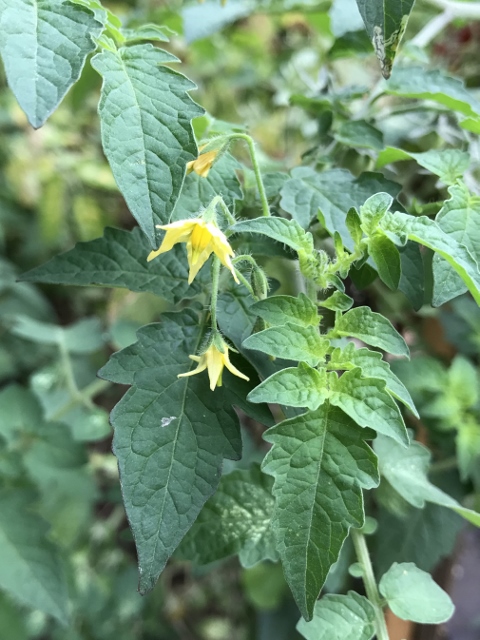Story and photos by Anita Westervelt, Texas Master Naturalist

Tomato, Solanum lycopersicum, a member of the Solanaceae family. This particular species needs further identification to include: [Lycopersicon esculentum var. cerasiforme].
This is one of those plants you may suddenly find in your garden, as did I, one spring. I left the plant to do its own thing, hoping to eventually identify what had decided to grow in part of my yard.
According to local authors, Dr. Albert Richardson and Ken King in their book, “Plants of Deep South Texas: A Field Guide to the Woody and Flowering Species,” page 401, this is a species of tomato introduced from South America that has become naturalized in Cameron and Hidalgo counties.
Naturalized plants are those that have become established in a region other than their place of origin, as opposed to native plants that have occurred naturally, without human introduction.
I’m always curious as to what might be popping up in my yard, so I generally wait until a mystery plant blooms before I decide to keep or remove it. While this plant was rapidly maturing, it looked like a tomato vine, smelled like a tomato vine, and was producing flowers that looked like those on cultivated tomato plants purchased from reputable nurseries.
There was somewhat of a subtle difference in the leaf structure and the shade of green. The plant seemed more spindly when compared to purchased tomato plants. The flowers were in delicate clumps, and the fruits, when they began to appear, hung like miniature green lanterns. Fairly quickly, the fruits grew to about the size of a marble and turned a bright — yes — tomato, red.
Shortly around this time, we were invited to a friend’s house. While waiting for dinner, we enjoyed a variety of cheeses and a small bowl of tiny red tomatoes — just like those on my surprise vine. Native tomatoes, they called them.

I kept my pop-up vine, both for myself and to share with the birds. Nothing could be easier. The plant is completely maintenance free, growing without aid of human kind. They magically appear, need no water and will split open on the vine and self-sow with total abandon. Before I knew it, my surprise vine took over a section of yard. I couldn’t tell where one vine stopped and another began. Some 50 feet away, vines were climbing and crawling through the fence and over other plants.
The good news, like cultivated tomato plants, these have a very small root base and are easy to pull up. Also like normal tomato vines, they will stain your hands and temporarily irritate your skin — gloves are recommended!
Authors Richardson and King caution that while this plant, other tomatoes, potatoes, eggplants, bell peppers and jalapenos, are edible members of the Solanaceae family, it must be remembered that the deadly nightshade is in this same family. In addition, the foliage of Lycopersicon esculentum, is poisonous to eat, according to information in the book, “Edible and Useful Plants of the Southwest,” by Delena Tull.
